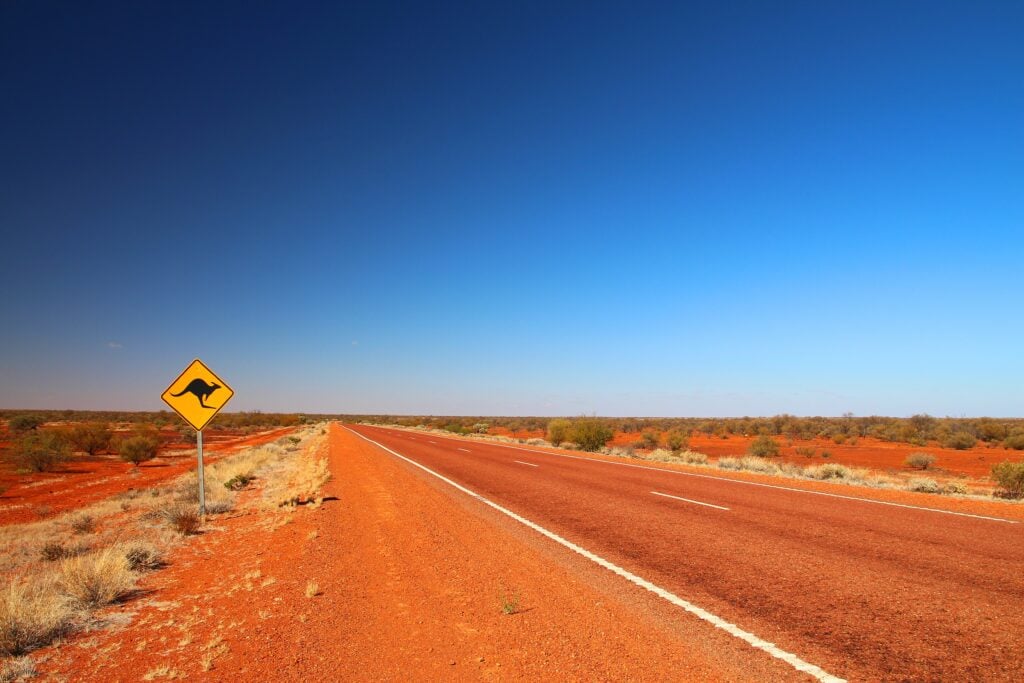
A vast land that looks like a single continent lost in the middle of the ocean, Australia is a country apart. Twelve times the size of France, but only a third as populous, Australia is a true symbol of freedom, with landscapes as different as the eye can see. This unique diversity, the result of millions of years of living apart, attracts thousands of travellers every year, eager to sample the scent of deliverance as they roam these wild lands, or simply to enjoy the peaceful pace of life in Australia's major cities. Here, then, are the "must-sees among the must-sees" of this marvellous country, for as you'll have gathered, a lifetime wouldn't be enough to explore every corner.
1. What to do in Australia Visit Sydney
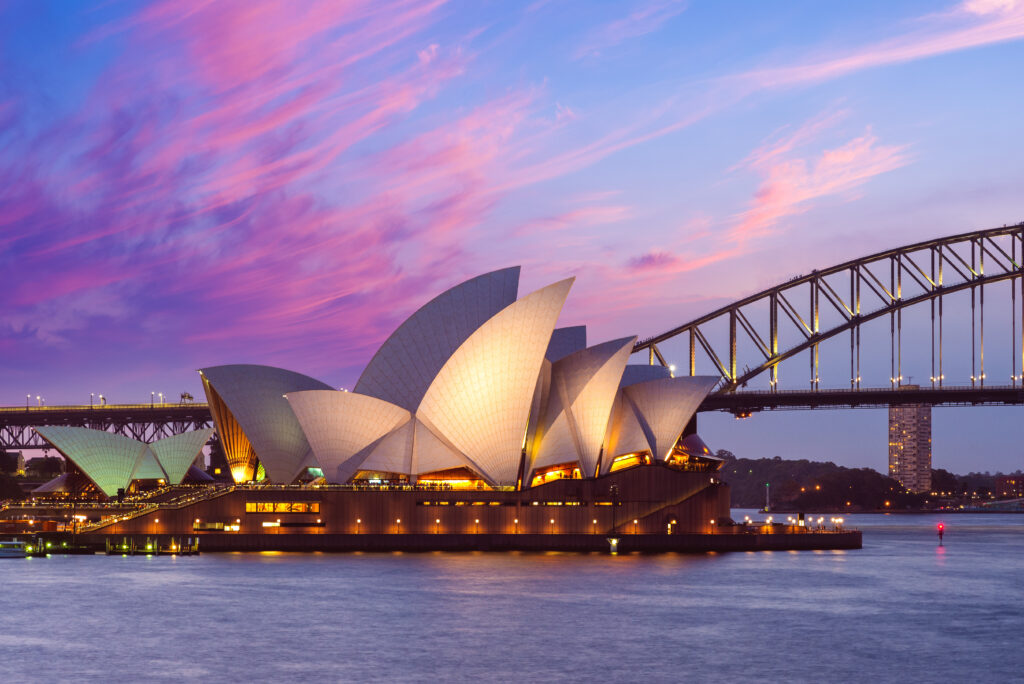
An exceptional natural setting in the heart of New South Wales, iconic sites and a relaxed atmosphere: Sydney is one of the country's great charmers! From the Opera House to the blond beaches, via Harbour Bridge and numerous museums, the metropolis offers all the attractions for a half-urban, half-natural stay. Alongside the buildings of the City, you'll discover historic alleyways, beautiful gardens and fun attractions such as the Aquarium and Luna Park. Vibrant and cosmopolitan, Sydney is a melting pot of cultures, a vibrant cultural life and a delightful art of living... you'll find it hard to leave. What to do in Sydney? Discover the 19 must-sees and our Top 10 things to do in New South Wales.
2. The Great Ocean Road
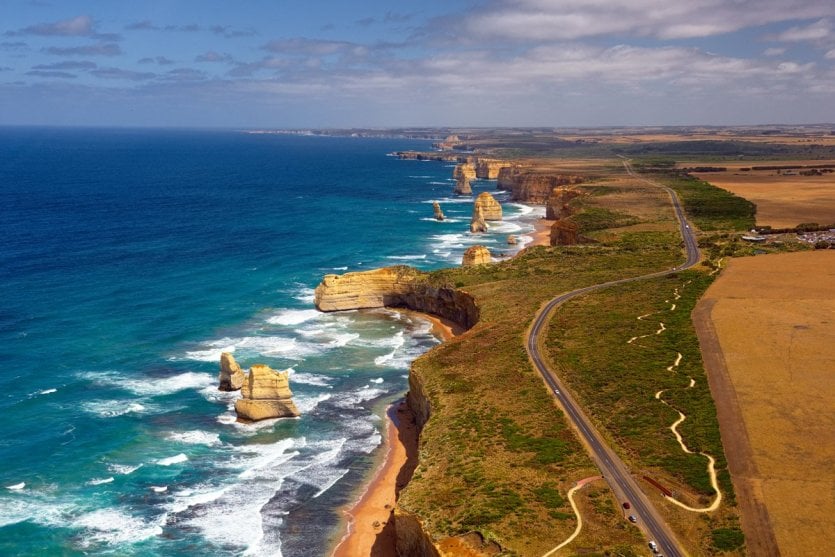
It's one of the most beautiful roads in the world... The Great Ocean Road, which runs along the coast of the Barwon South Western Region, is a spectacular 320 km stretch of cliffs and deserted beaches, from Torquay to Warrnambool. On this coast, also known as the Shipwreck Coast because of the many shipwrecks that have occurred here, the sea constantly reshapes the landscape, leaving only the hardest rocks. The Twelve Apostles, the stone sentinels that watch over the Antarctic waves off Port Campbell, are the most famous. Don't hesitate to travel the Great Ocean Road on a cloudy day. The change of light at the various sites is simply marvellous. Planning a road trip in Australia? Check out our article "2 must-do road trips in New South Wales, Australia".
3. Tasmania
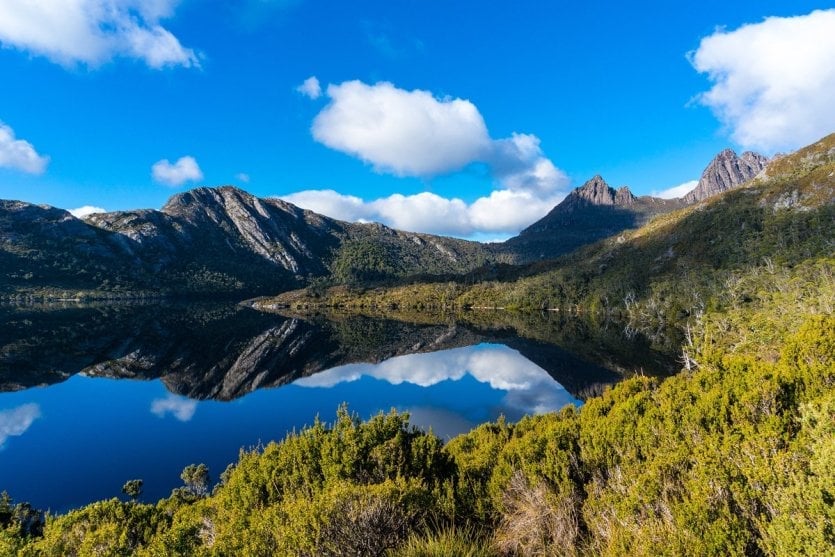
Located 240 km south of Melbourne and separated from the mainland by the Bass Strait, Tasmania is Australia's smallest state after the Australian Capital Territory... With its succession of hills, valleys and plateaus, volcanoes and jagged coastlines, the island is reminiscent of Old England, Argentine pampas, African savannahs and the Great Rockies. Ancient glaciers have carved out majestic mountains and deep lakes on the island's central plateau, making it one of the most paradisiacal places to winter while waiting for the sun to return .
4. What to do in Australia Go toAyers Rock-Uluru
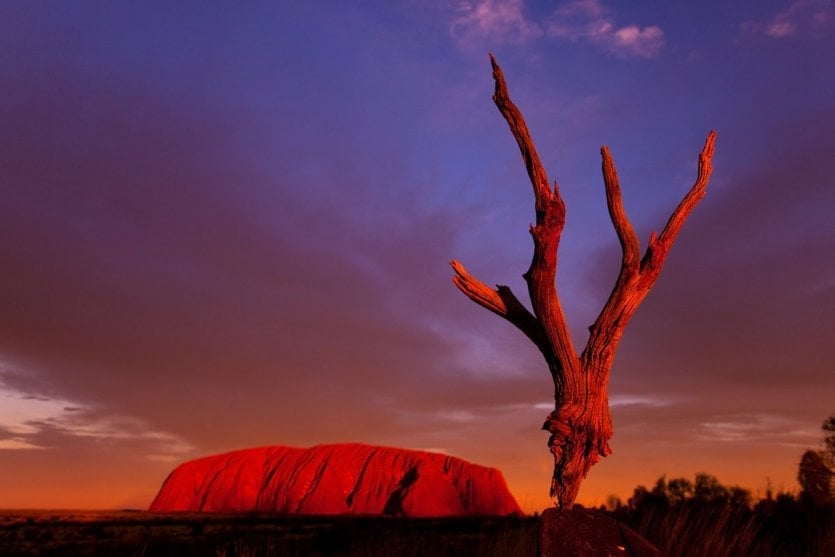
You've seen it photographed so many times that Ayers Rock - or Uluru, in Aboriginal - has become the iconic representation of the Australian outback and remains the greatest sacred site for the Aborigines. This immense sandstone rock, 9 km in circumference and 350 metres high, is the world's largest inselberg, and a UNESCO World Heritage Site. 500 million years old, its relief has remained virtually unchanged, and is always a sight to behold at sunrise and sunset. Its colors change from pink to ochre-orange to red-brown as the light fades: a surreal spectacle.
5. Kakadu National Park
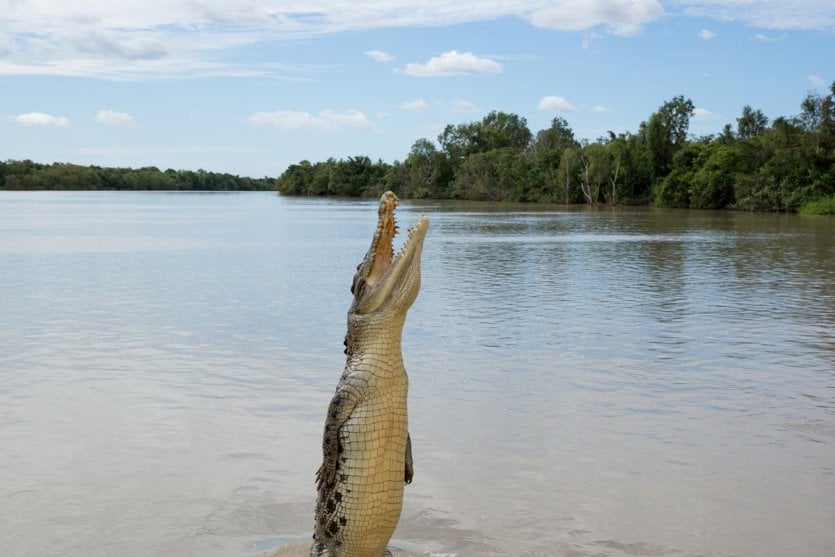
Listed as a UNESCO World Heritage Site, Kakadu National Park is Australia's largest national park, covering an area of 20,000 km²! Jungle, mangrove, savannah, gorge and waterfall: this immensity is made up of a variety of landscapes, populated by the most diverse fauna. It also boasts a priceless heritage of Aboriginal rock art, with over 5,000 sites listed. Over 20,000 years old, this heritage represents one of the oldest historical traces of civilization in the world.
6. What to do in Australia See the Great Barrier Reef
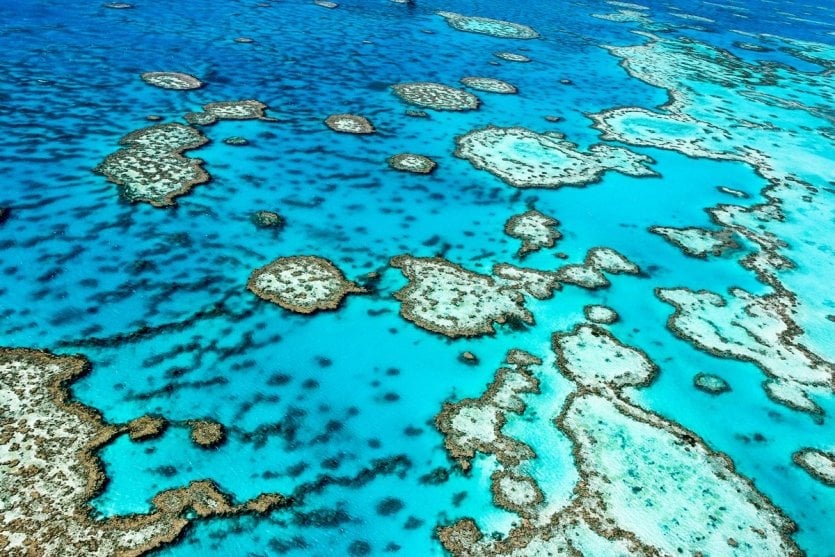
The Great Barrier Reef, one of northern Australia's must-sees, is a long chain of white atolls set against a turquoise backdrop , offering an enchanting underwater spectacle where fish and colorful coral ripple with the currents. The Great Barrier Reef isthe longest coral reef in the world, preserving an incredible array of flora and fauna, including 400 species of coral, 1,500 species of fish and 4,000 species of molluscs. Listed as a UNESCO World Heritage Site, it is the only living organism visible from space . Diving and cruising offer a spectacular spectacle, with a ballet of bright colors and varied shapes.
7. Whitsunday Islands National Park
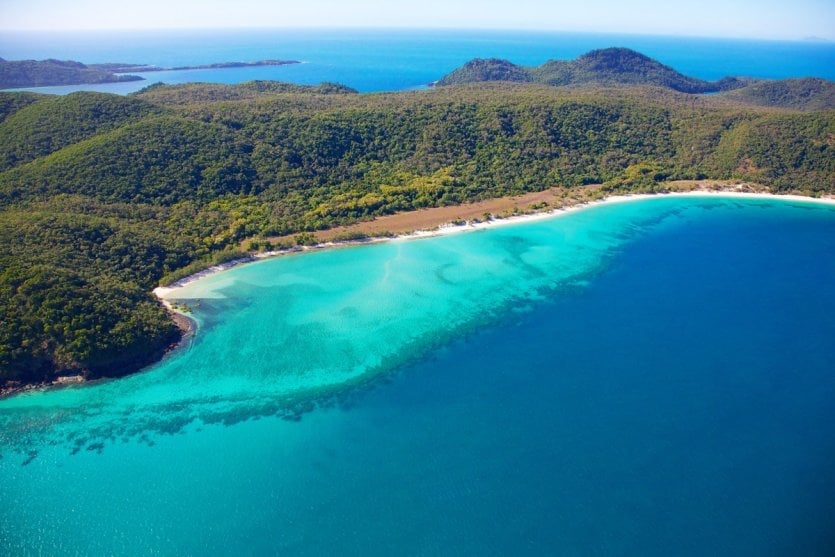
One of the 20 most beautiful national parks in the world... Paradise exists in the Whitsunday Islands! This archipelago of 74 islands off the coast of Queensland is simply divine, with its white sandy beaches, translucent waters and multicolored fish splashing about in the Coral Sea. It's a favorite spot for diving, with four flagship sites: Flinders Reef, Yongala Reef, Ribbon Reefs and Cod Reefs. Luxury tourism has developed strongly, and you'll find magnificent resorts in the heart of these breathtaking landscapes.
8. What to do in Australia Going to Melbourne
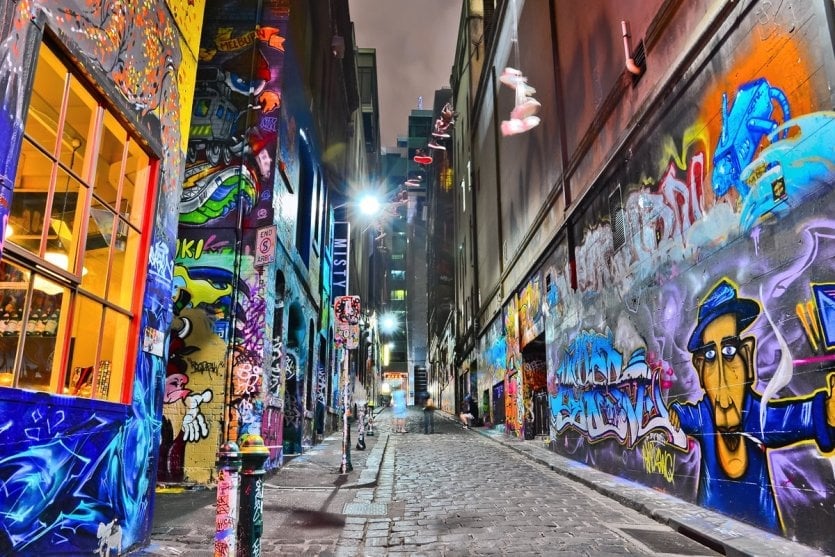
Australia's second-largest city, Melbourne is considered the country's cultural, sporting and gastronomic capital: three pleasures on offer! With its European ambience, Melbourne plays on the contrasts between its Victorian architecture, exuberant buildings, trendy districts, beaches and graffiti-covered alleyways. Bobos and epicureans alike enjoy strolling through the city, lazing on a café terrace, strolling through the Queen Victoria Market or daydreaming along Port Philip Bay. Don't forget tovisit the State Library of Victoria, one of the most beautiful libraries in the world!
9. Perth
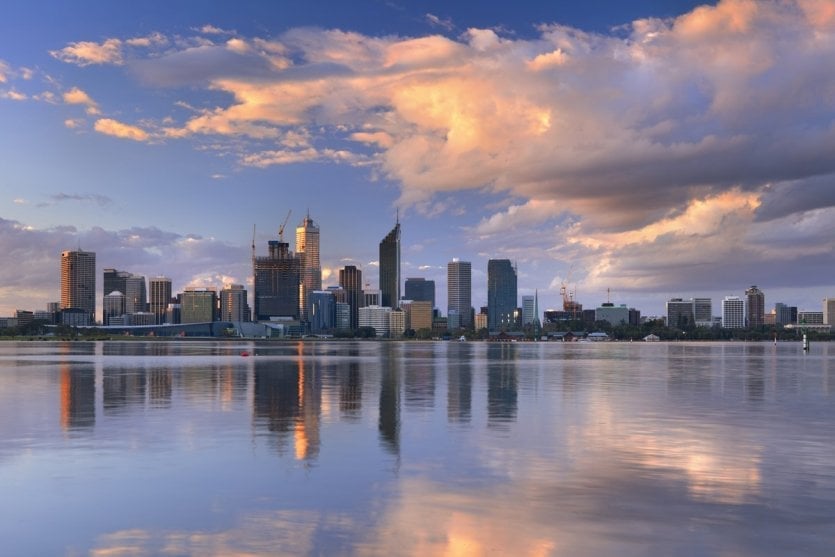
The capital of Western Australia and the country's fourth-largest city, Perth is crossed by the Swan River, home to a colony of some twenty dolphins that are not uncommon to spot. The city is made up of over 350 suburbs, each with its own character. Today, Perth has become a modern city, where the skyscrapers of the City reflect the ever-blue skies and where you can feel the daily serenity. While the city is reputed to be the sunniest on the continent, it is also the most isolated in the world, with 80% of the state's population living in and around Perth. Perth is also one of the 17 trendiest destinations in the world.
10. What to do in Australia Visit Kangaroo Island
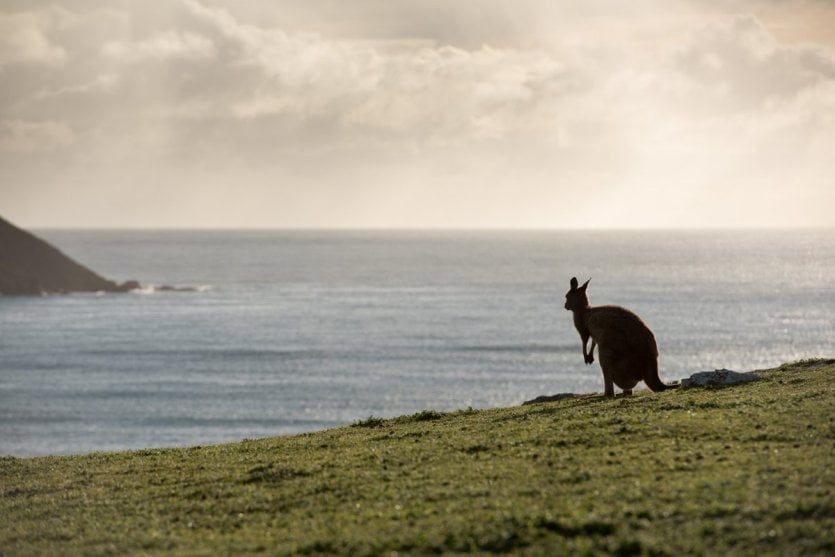
110 km southwest of Adelaide , Kangaroo Island is Australia's third-largest island, and a third of its surface area is now classified. It's an animal kingdom, with kangaroos of course, but also koalas, sea lions, wallabies, monitor lizards and possums. Nearly 250 species of birds can also be spotted, including black cockatoos, a rare and endangered species. All this wildlife is protected by various programs, so you can enjoy the peace and quiet of the park.
11. The Blue Mountains
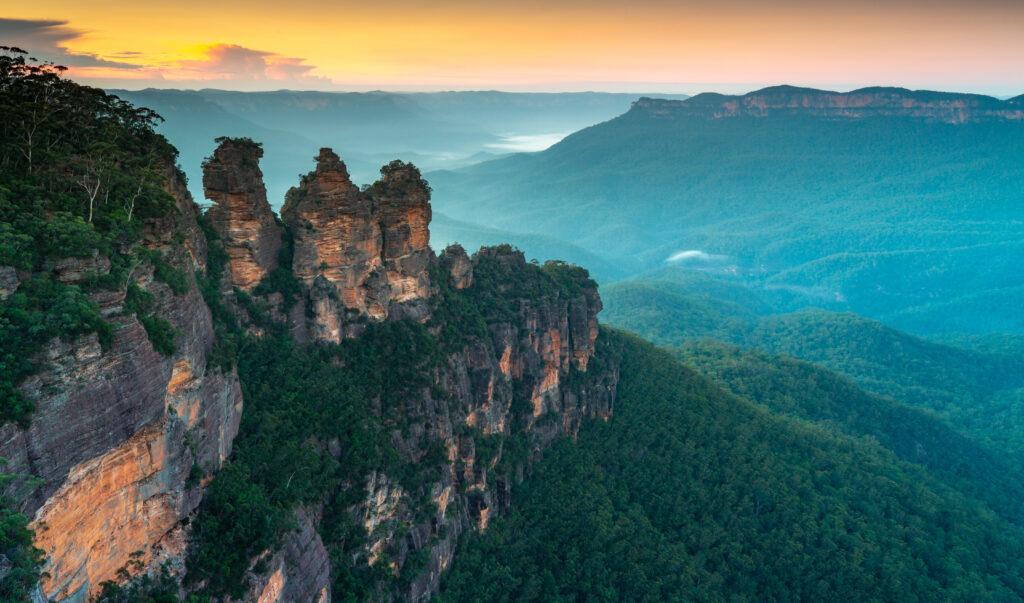
Blue Mountains? Yes, for the bluish reflections produced by the volatile emanations of the eucalyptus trees that cover its flanks! Just over a hundred kilometers from Sydney, this mountain range forms a cordillera culminating at 1,111 meters above sea level. The Blue Mountains National Park, a UNESCO World Heritage Site, offers outstanding hiking and panoramic views. Head to Echo Point to see the Three Sisters rock formation, the beautiful Wentworth Falls waterfall or the Jenolan Caves: the oldest open cave system in the world.
12. Admire the Ningaloo Reef: an eco-friendly alternative in Australia
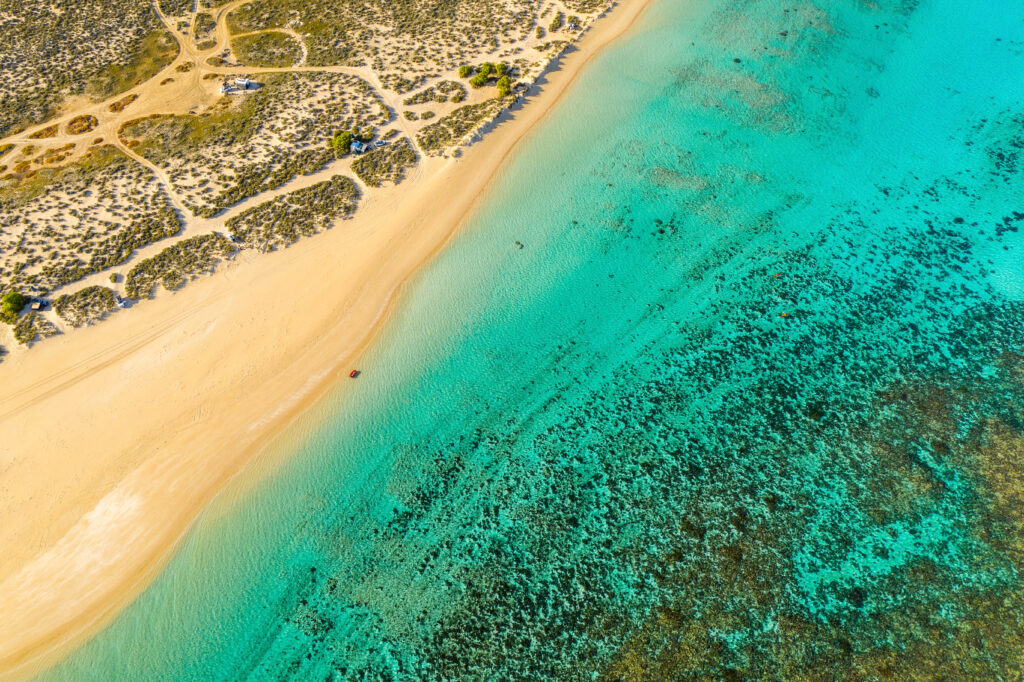
The fame of the Great Barrier Reef is undeniable, and we couldn't leave it out of our selection. However, it is under threat from over-tourism, among other factors, which could lead to its irreversible disappearance. Against this backdrop, we recommend that you visit the Ningaloo Reef on the west side of the island, aprime alternative to the Great Barrier Reef for avoiding mass tourism. It is also a UNESCO World Heritage Site, and offers breathtaking scenery to divers, with its seabed home to a multitude of colorful coral species and other fascinating marine creatures, including whale sharks. In fact, it's one of the best places in the world to swim with whale sharks !
Discover our dedicated article "How can you help save Australia's Great Barrier Reef?"
13. What to do in Australia? Brisbane and the Gold Coast
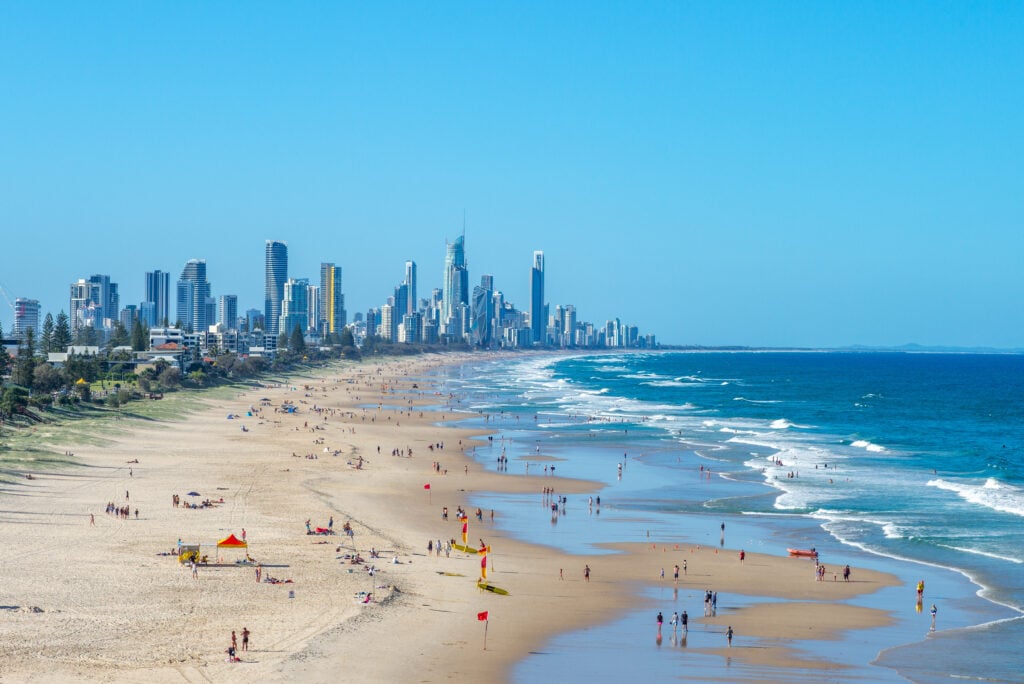
While Australia is world-renowned for its surfing, it's also a great place for whale watching. Head for the Gold Coast, a privileged spot to see the males make great and impressive leaps into the ocean, as well as slapping the water with their flippers. Why do they do this? Quite simply, it's a courtship ritual to attract females. From Byron Bay to Hervey Bay and Brisbane, there's no better opportunity to see the sea behemoth and immortalize the moment with a good camera.
14. The village of Coober Pedy
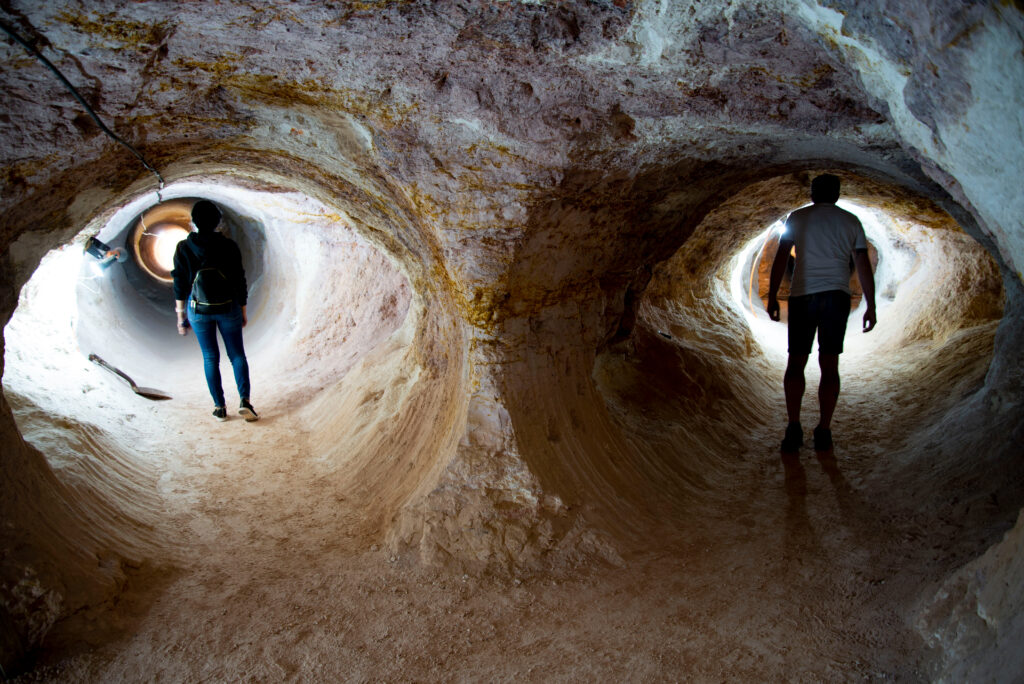
One of the most original destinations to discover with the whole family... During a trip to Australia, discovering the arid, lunar landscapes and ochre colors of theoutback is always an incredible experience, and the village of Coober Pedy is the perfect illustration. It can get as hot as 51°C in the shade, and the territory endures seasonal dust storms, but some of its inhabitants live here because it's the world's largest opal mining region. To withstand these extreme conditions, they have built underground troglodyte houses for shelter. Discover this vast underground network of comfortable homes, churches, underground bars, stores and even museums!
15. What to do in Australia Mungo National Park
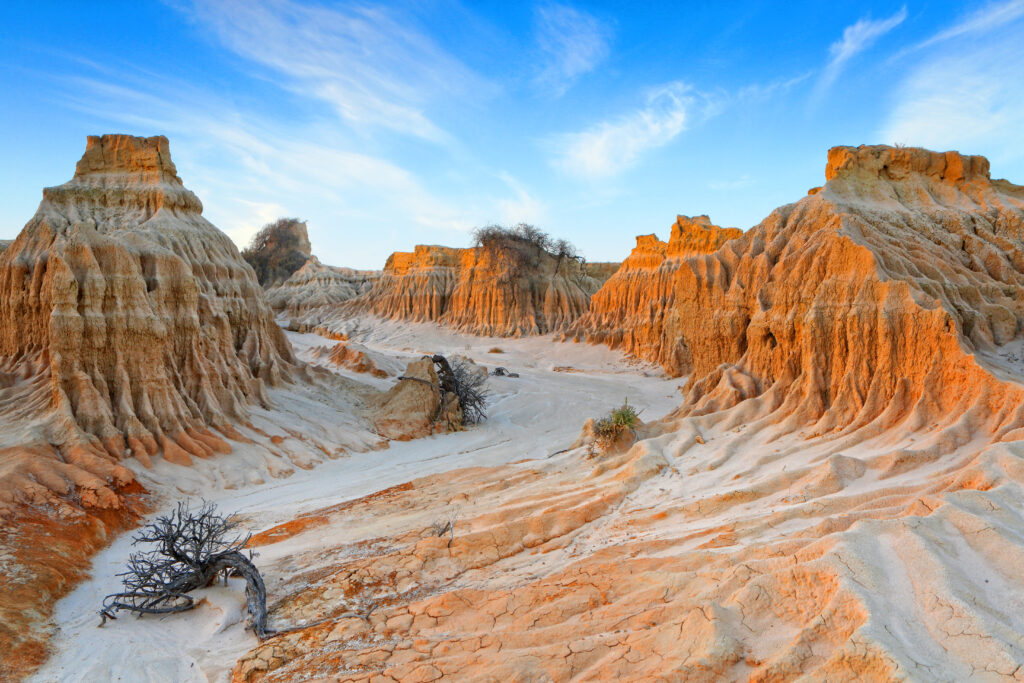
At Mungo National Park you'll be able to see magnificent landscapes made up of ancient dry lake basins and sand formations. It's also an opportunity to discover the local Aboriginal culture and that of Mungo Lady and Mungo Man, human remains discovered in the 1960s-1970s that are 42,000 years old! You can also cross paths with emus, red kangaroos and Australian eagles and enjoy the incredible scenery of this national park in New South Wales, a fascinating and diverse state.
16. Go to Broken Hill, a legendary town
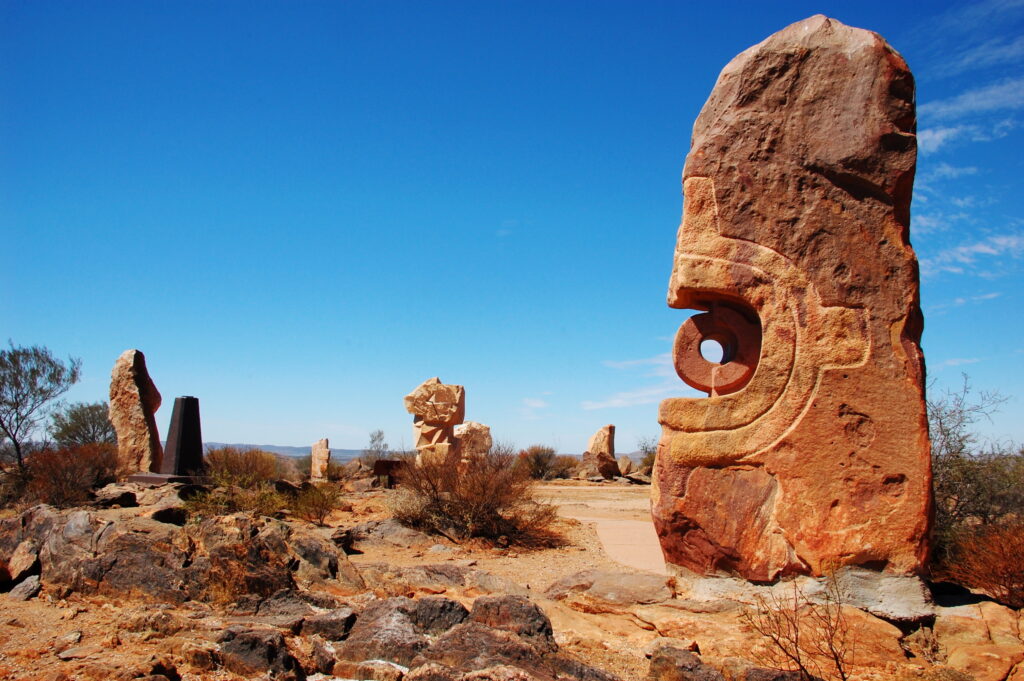
This is one of the must-see places in the Australian Outback: Broken Hill is Australia's oldest mining town . Once there, it's only logical to take a closer look at its rich mining history, by visitingthe Line of Lode Miner's Memorial, which celebrates the lives and work of over 800 miners who lost their lives. Or take a stroll through the Albert Kersten Mining and Mineral Museum, home to a wealth of artefacts. A 20-minute drive north is the astonishing Living Desert and Sculptures, 12 sandstone sculptures, each telling a story against the backdrop of the desert landscape. Particularly beautiful at sunset, this is clearly one of the top 10 cultural experiences in New South Wales.
17. Pinnacles Desert
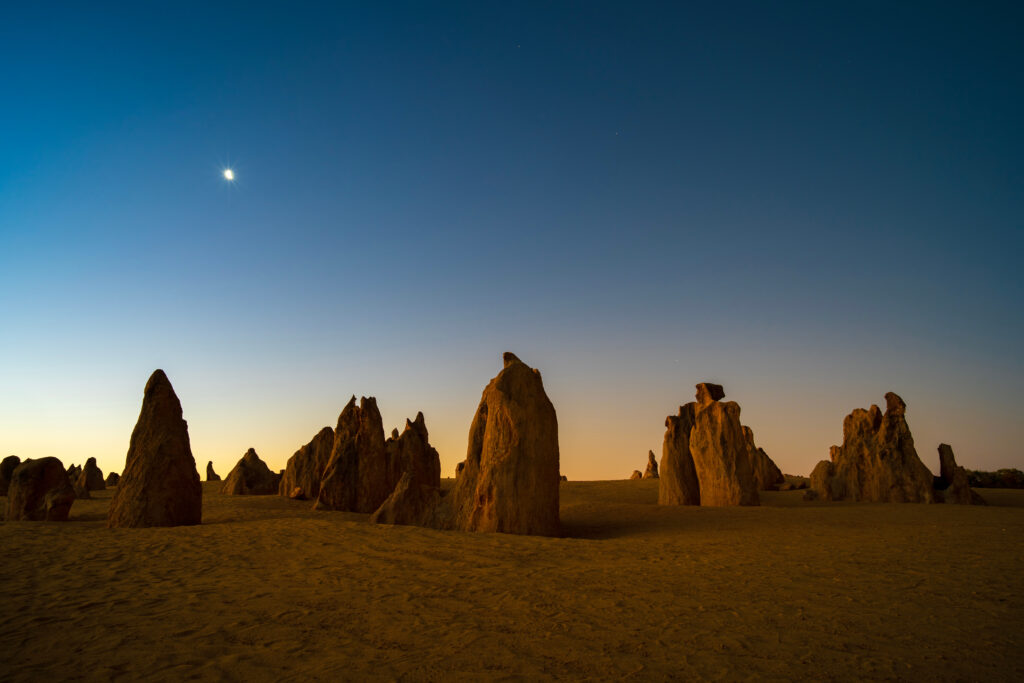
Looking for landscapes that seem to come from another world in Australia? Head for the Pinnacles Desert, where you'll be able to contemplate endless yellow sand and, above all, a multitude of limestone peaks and rocks in a variety of shapes, 30,000 years old! Some of them are massive, reaching heights of up to 4 m. To access this lunar landscape, you need to enter Nambung National Park, north of the city of Perth.
18. What to do in Australia Going to Adelaide
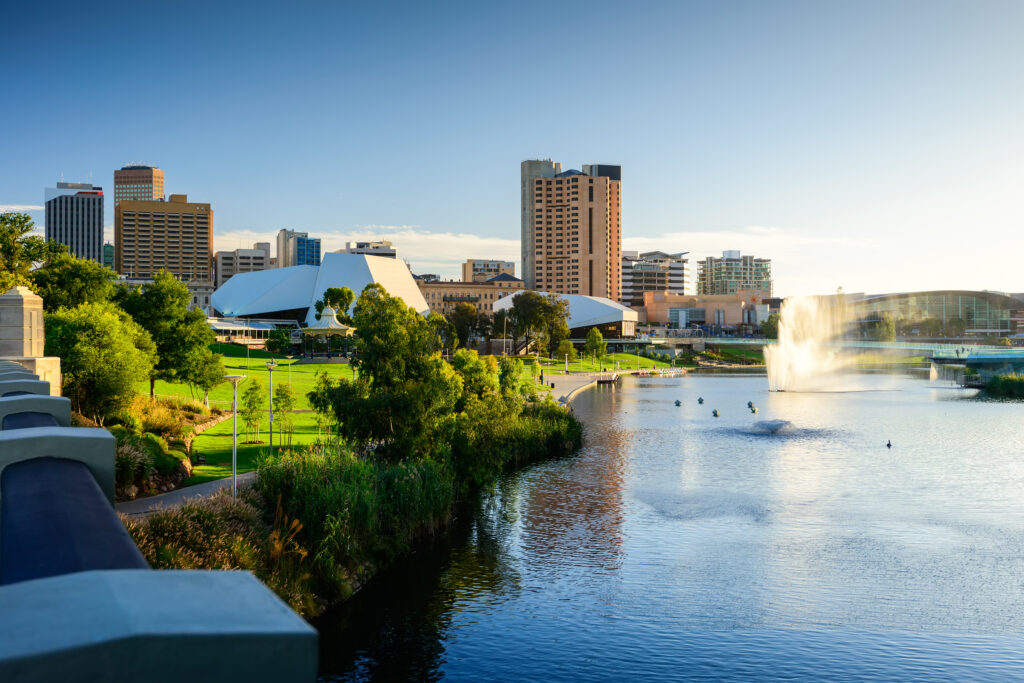
It's one of the wonders of South Australia : Adelaide has managed to avoid the "Americanization" of its sisters, and has remained a provincial city, with a slower, more relaxed lifestyle. It is a city of arts and letters, with numerous museums and art galleries, most of them concentrated on North Terrace. The Galleries of Aboriginal Cultures boast the world's largest collection of Aboriginal art. A fascinating visit that can be continued at the Art Gallery, which exhibits some 38,000 pieces from four continents. A stone's throw away is the elegant State Library and the Botanical Gardens, where the National Wine Centre has set up shop amidst subtropical plants.
19. Trek from Alice Springs to Mount Sonder
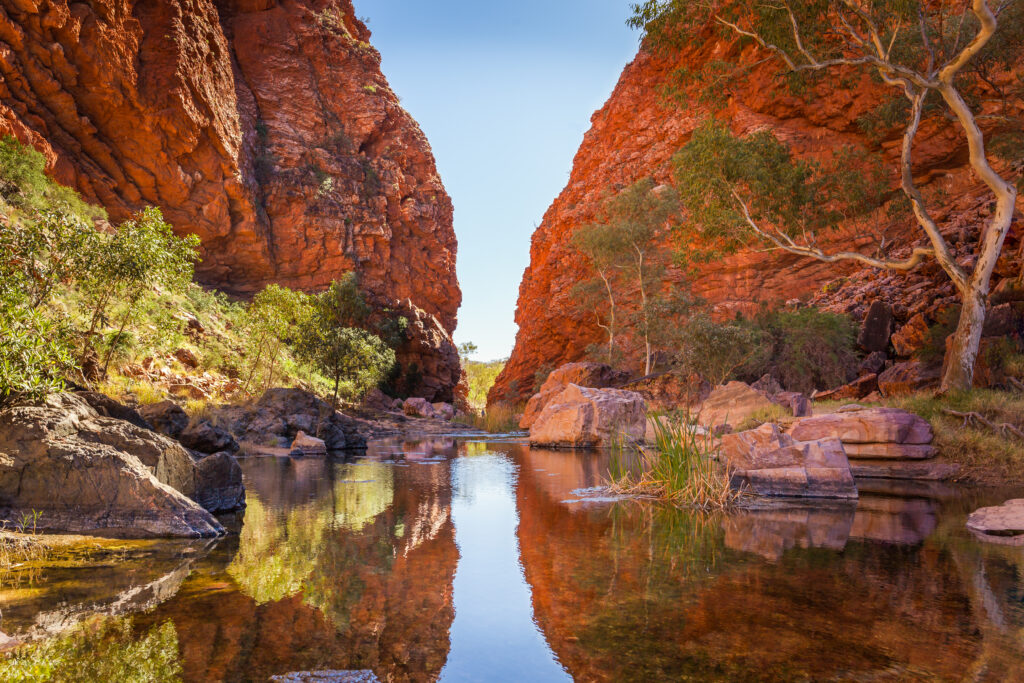
Australia is one of our Top 10 destinations for magnificent hikes, and for good reason. The Larapinta Trail, ranked among the world's top twenty treks, takes you on a 230 km-long trail from Alice Springs to Mount Sonder. You'll follow the ridge of the West MacDonnell Ranges and enjoy breathtaking panoramas. The most courageous can attempt the whole trail, but it is actually made up of twelve sections, with different levels of difficulty, which is quite convenient for those who wish to do only part of it. Campsites are available for hikers, and each drinking water point is about ten kilometers away.
20. An oenological escapade in the Hunter Valley
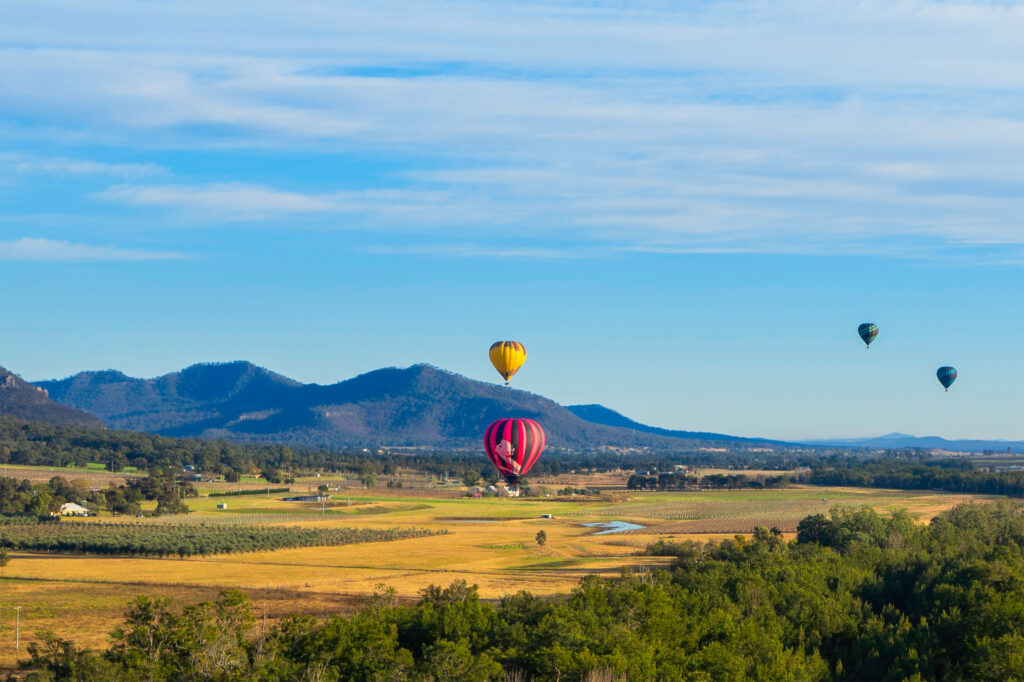
It's one of the 10 must-do experiences in New South Wales: welcome to the Hunter Valley, Australia's oldest and one of its most renowned wine regions. It welcomes visitors to the heart of its landscapes of vineyards and hills, where kangaroos can often be seen wandering around. You can book a stay at an estate and then learn about the world of wine by taking part in tastings of local vintages, or even decide to fly over these magnificent landscapes in a hot-air balloon.
21. What to do in Australia Visit one of the world's most unusual beaches
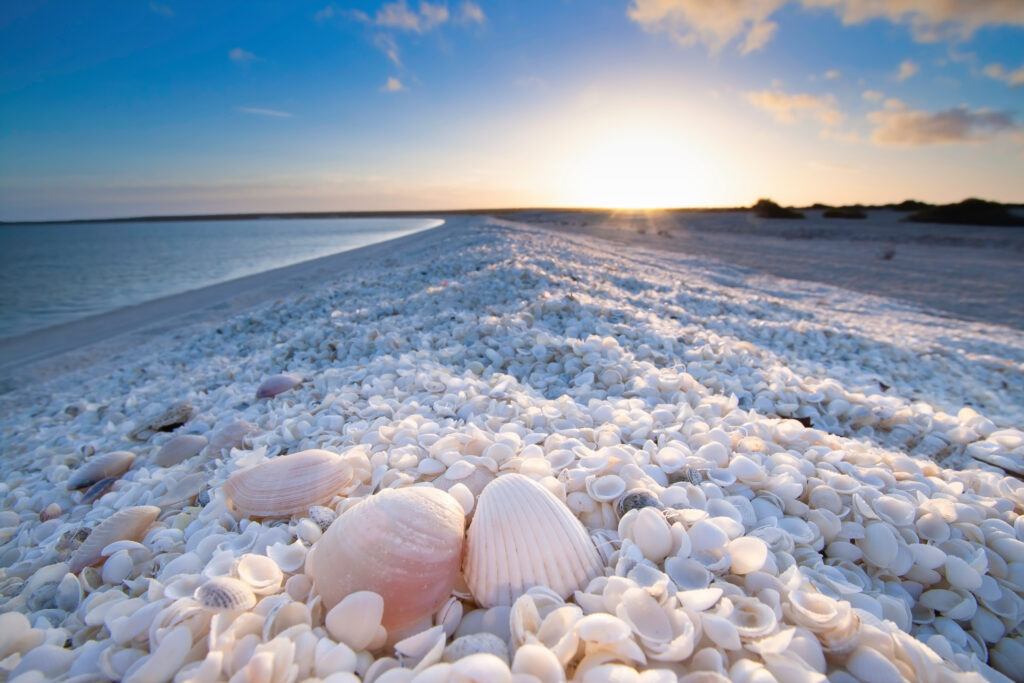
It's one of the most unusual beaches in the world: Shell beach may look like a paradise beach with its crystal-clear waters, but its soil is downright intriguing! In fact, you won't be basking on white sand, but on a 60 km-long succession of tiny shells! Mind you, this unusual landscape is not the ideal place for sunbathing, especially as it's not far from Denham, in Australia's shark-filled Shark Bay.
What to visit in Australia for 15 days?
Australia offers a wide range of attractions and destinations to explore in 15 days. Here's a suggested itinerary covering some of the country's highlights:
- Sydney: Start your trip by visiting iconic landmarks such as the Sydney Opera House, the Harbour Bridge and the famous Bondi Beach. Also explore the lively neighborhoods of Darling Harbour and The Rocks.
- Cairns and the Great Barrier Re ef: Head north to discover the natural beauty of the Great Barrier Reef. Snorkel or scuba dive to explore the colorful corals and diverse marine life.
- Uluru (Ayers Rock): Head to Australia's red center to see the magnificent Uluru Monolith at sunrise or sunset. Take the opportunity to discover Aboriginal culture through guided tours and cultural experiences.
- Melbourne: Explore Melbourne's art and culinary scene by visiting art galleries, local markets and renowned restaurants. Don't miss a stroll through the city's colorful lanes and historic arcades.
- The Great Ocean Road: Drive along the picturesque Great Ocean Road, admiring iconic rock formations such as the Twelve Apostles and Loch Ard Gorge. Stop off in charming coastal towns and take in the stunning coastal scenery.
- Brisbane and the Gold Coast: Finish your trip exploring the bustling city of Brisbane and relaxing on the beaches of the Gold Coast. Visit theme parks such as Dreamworld and Movie World for a dose of adventure and entertainment.
When planning your itinerary, be sure to take into account distances and travel times between destinations, choosing the most appropriate means of transport to suit your preferences and budget.
What to visit in Australia for 3 weeks?
With an extra week, you can explore more regions and deepen your Australian experience. Here are a few suggestions to complete your initial itinerary:
- Tasmania: Spend a few days discovering Tasmania's rugged beauty. Visit Cradle Mountain-Lake St Clair National Park for some spectacular hiking and scenery. Also explore Hobart, the state capital, with a stroll through historic Battery Point and a visit to the famous Salamanca Market.
- Kangaroo Island: Fly to South Australia to explore Kangaroo Island, renowned for its abundant wildlife and unspoilt coastal landscapes. Take a trip to see kangaroos, koalas, seals and sea lions in their natural habitat.
- Margaret River region: Add a stopover in Western Australia to discover the Margaret River wine region. Enjoy wine tasting at local wineries, picturesque beaches and explore the region's limestone caves.
- The Blue Mountains: Extend your stay in Sydney with a few days in the Blue Mountains. Hike the magnificent mountain scenery, visit the rock formations of the Three Sisters and relax in the region's picturesque villages.
By adding these destinations to your itinerary, you'll have the opportunity to discover Australia's natural and cultural diversity through a wide range of unique landscapes and experiences. Be sure to plan your travel and accommodation in advance to optimize your time and make the most of your trip.
What to do in Australia for a year
Spending a year in Australia, one of the South Pacific's top destinations to discover, offers an exceptional opportunity to explore this vast and diverse country. Here's a suggested itinerary and activities to make the most of this enriching experience:
- Work and travel: Take advantage of the Working Holiday Visa to combine work and exploration. Work on farms, in restaurants, hotels or other industries to finance your trip while discovering different parts of the country.
- Road trips across Australia: Australia is one of our Top 10 road trip destinations, with a huge number of road trips to choose from. Embark on an epic road trip across the country. Travel along the east coast, taking in destinations such as Byron Bay, the Gold Coast, Fraser Island and the Great Barrier Reef. Then head north via Cairns, and into the center to discover Uluru, the Flinders Ranges and Alice Springs. Discover our articles "A practical guide to touring Australia in a van" and 10 good reasons to discover Australia in a camper van.
- Discover the wilderness: Explore Australia's wilderness by hiking the Blue Mountains in New South Wales, visiting Kakadu and Litchfield National Parks in the Northern Territory, discovering the unique wildlife of Kangaroo Island in South Australia, and camping in the Pilbara Desert in Western Australia.
- Surfing in all seasons: When it's winter in Europe... The good news is that it's summer in Australia. There's plenty of choice when it comes to tackling the waves and enjoying the warm ambience of the coastal resorts. Surfers Paradise in Queensland, Byron Bay in New South Wales and Torquay in southern Victoria are just some of the best spots to surf . As you'll see, surfing is almost a second religion in many of the coastal cities of this immense country.
What kind of visa do I need to visit Australia?
To visit Australia as a tourist, you'll need a tourist visa or an e-visa. We advise you to read our dedicated article "What are the specific requirements for obtaining a visa for Australia?" but here are the main types of visa available to visitors:
- Electronic visitor visa (subclass 651): Also known as the ETA (Electronic Travel Authority), this visa is available to nationals of certain eligible countries. It can be applied for online and allows you to stay in Australia for tourist or business visits for up to three months at each entry during a 12-month period.
- Tourist visa (subclass 600): This visa is intended for people who are not eligible for the ETA or who wish to stay in Australia for a longer period. It allows people to stay in Australia for tourist or family visits, business travel or other reasons specified by the applicant. The length of stay and conditions of the visa vary according to the applicant's individual circumstances.
- Working vacation visa (subclass 417 for nationals of certain countries and subclass 462 for others): This visa allows young adults aged between 18 and 30 (35 in some cases) to travel to Australia for an extended vacation while having the option of working to finance their stay. It is generally valid for one year from the date of entry into Australia.
It is important to check the specific visa requirements for your country of residence and plan your visa application accordingly. Make sure you comply with all the conditions of your visa during your stay in Australia, including work restrictions and deadlines for leaving the country.
Interested in living or vacationing in Australia? Take advantage of a discount by booking your travel insurance here, and leave with peace of mind!
Don't forget to consult our articles dedicated to preparing a trip to Australia: "Travel to Australia: 5 things not to forget in your suitcase" and "5 things not to forget before leaving on a trip to Australia".


